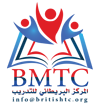Procurement Management of Equipment and Works for World Bank Aided Projects
The Course Content
Course Outline Modules – Teaching Objectives
Take Away:
A framework and a menu of decision-enabling tools that enables World Bank procurement specialists to facilitate the development of well received, effective procurement strategies for development projects
- From Procurement Guidelines to Making the Transition
- What are the key technical changes in the new Regulations?
- Where are we trying to provide flexibility, and where are the main areas of risk we would like to focus
- Where can you go for support and clarifications and feedback
- How will we run two Frameworks?
- How will we manage clients who want to apply one set of guidelines instead of the other (transitioning pipeline projects)
- Developing Project Procurement Strategy for Development (PPSD) projects
- Understand why the PPSD is important to achieve WB Procurement objectives.
- Understand where the PPSD fits within the WB Project Cycle and where the PPSD and other documents complement each other (e.g. risk assessment for both projects and contracts)
- Understand some of the constraints that will be faced developing a PPSD (unclear PDOs, pressure from TTL, lack of client capability)
- Understand the outline of the document and how analysis is turned into intelligence for decision making
- Understand how to set the project up for success using a cross-functional team
- Understand how operating context, sector, client capability affect our approach
- Needs analysis and Supply Chain/Market Analysis
- Understand and define the procurement needs and objectives and how these align with the
- Understand the supply market using a suite of analytical tools such as supply chain analysis, supply positioning, power/influence, where cost and risk are added in the supply chain, what is the capability and competitiveness of the market – how best to interact with it
- Understand how risk related to procurement complexity and market analysis influences the procurement approach.
- Specifying requirements
- How to turn the business needs into specifications (quality, usage, environment, supply chain, service, innovation, outcomes, cost, relationship)
- Linkages to KPIs
- Planning the approach to market and evaluation
- Based on the needs, objectives, risks and opportunities identify the options for approaching the market
- Analyze, evaluate and refine the strategy options systematically (SWOT) against the needs etc. and determine a preferred approach.
- Approaching the market and selecting a preferred bidder
- Documenting the selection process.
- Evaluation planning, market engagement, to contract conditions and KPIs
- Negotiating and awarding the contract
- When is it appropriate to negotiate, BAFO
- How to line up the objectives and focus on what adds value, or reduces risk
- Understanding their point of view and closing the gap
- Achieving Value for Money throughout the procurement lifecycle
- What is value?
- How is it added and eroded
- How can we protect it, create it through our procurement decisions
- Contract Management
- Contract management planning to achieve the objectives (line of sight from the needs through to the contract)
- Setting up the trifecta:
- Contract administration
- Performance management and KPIs
- Relationship management
- Detecting Fraud and Corruption
- What are the red flag items at each stage of the procurement process?
- How to detect, prevent and manage F&C?

